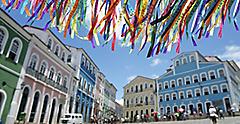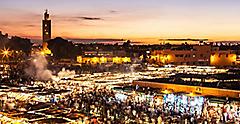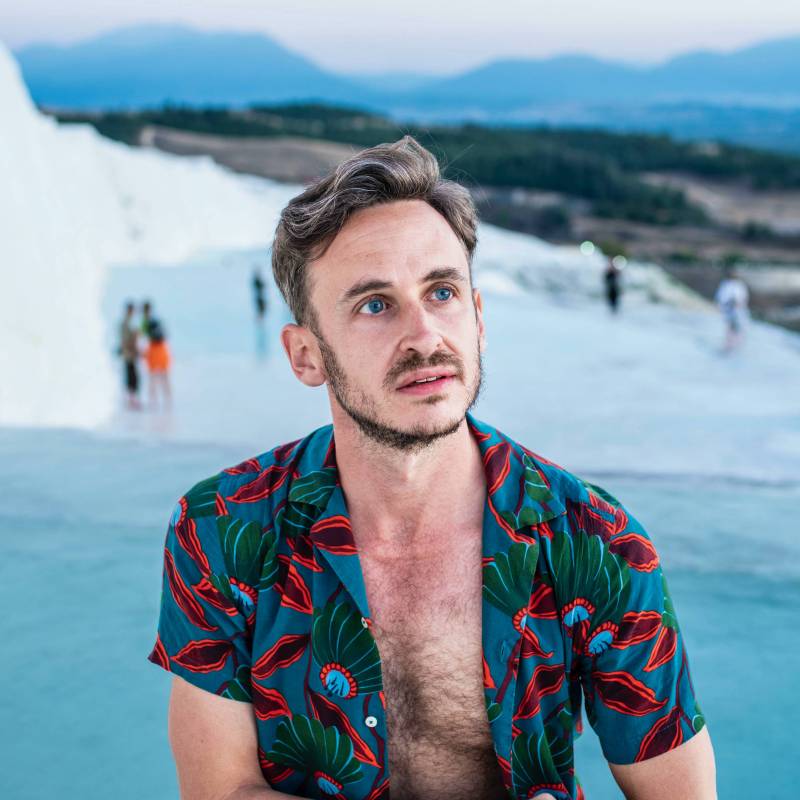By Robert Schrader | Published on November 19, 2025
Traveling to Brazil in February is so linked with Carnival that many people on vacation never end up learning how or when it originated, or the surprisingly spiritual underpinnings of the festival. It's a good idea to brush up on Brazilian Carnival history before you travel. The annual celebration, also known as Carnaval do Brasil in Portuguese, is so exciting you won't have time to do much besides immersing yourself in the culture of dancing, singing, drinking and eating. Learn its history and cultural origins here and prepare to make your vacation travels even more enriching.
Key Takeaways:
- ● The Brazilian Carnival origin story began in 1723 with Portuguese traditions, evolving over centuries into the vibrant, world-famous celebration led by Rio de Janeiro’s organized parades and nationwide street parties.
- ● The Carnival has roots in the Catholic pre-Lenten celebration of indulgence before purification. Today, it fuses Samba with African influences.
- ● Carnival costumes and music are vibrant, expressive and symbolic, blending feathers, masks and Samba rhythms to celebrate joy, unity and freedom beyond social boundaries.
- ● Regional celebrations occur across nearly every major Brazilian city, not just Carnevale Rio.
- ● Each year, Brazil carnival dates occur in February or March based on the Lenten calendar. Due to high demand and occasional cancellations from global events, travelers should plan early.
When Did Brazil's First Carnival Take Place?
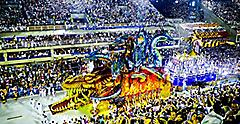
Brazilian Carnival history begins before Brazil was even established as a country, back in the early 18th century. Around that time, in 1723 to be specific, immigrants from Portuguese territories like the Azores and Madeira brought their Entrudo tradition with them when they came to Brazil. This rowdy festival, itself inspired by earlier European Carnival celebrations that paid tribute to Greek wine gods, saw people take to the streets, dousing themselves in food, wine and mud.
Initially, European Polka and Waltz music served as the soundtrack to Brazil's first few Carnival celebrations. As Brazil received more immigrants, its Carnival became even more unique and interesting. People from Africa introduced the much-loved Samba music of Carnival and dance in the early 20th century. Arguably, it's because of the integration of Samba into Carnival that it's now considered quintessentially Brazilian, despite its unmistakably African origins.
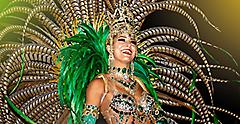
As the 20th century drew on, Rio de Janeiro's Carnival became the largest and most famous in Brazil. Rather than a random street party, it's become an organized competition during the famed Brazil parade. The "winner's parade" on the Saturday after the Carnival competitions is what many tourists consider to be Carnival itself.
Countless street parties take place throughout Rio de Janeiro (and all over Brazil) during the annual Carnival. The most notable bash is at Copacabana Beach, which, in addition to the main event at Sambadrome, is where you're likely to find yourself if you visit Brazil during Carnival.
The Religious Origin of the Festival: A Different Side to the History of Carnival in Brazil
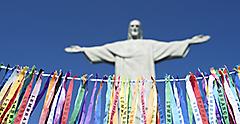
Today's Brazilian Carnival celebrations are a decidedly secular affair — a reminder of the festival’s Catholic religious origins is seen when determining the dates, as Carnival takes place before Ash Wednesday and Lent. Like the Portuguese festivals that morphed into Carnaval do Brasil, they are nothing if not a legacy of the Catholicism that secured the very founding of Brazil as a modern country.
So, why is Carnival in Brazil celebrated? The idea of Carnival, in Brazil and elsewhere, is to allow people one final festive outburst before Lent, when Catholics give up their vice (or vices) for 40 days. The "sin" that sometimes defines contemporary Carnival is on a different level than what you might've seen in centuries past; the spirit in both cases is one of purification.
Despite Brazil remaining Catholic in post-colonial times, as it was back then, what has defined Brazil's take on Carnival (and, thus, Brazilian Carnival history) is something non-religious. Well, unless you consider Samba song and dance to be a religion, which, to be fair, some in the country might argue is true. As described above, the Rio de Janeiro Carnival centers almost entirely around Samba competitions, even if street parties around the city are more about debauchery than dancing.
A Modern Celebration: What Does Carnival Celebrate Today?
What To Wear? Brazilian Carnival Costumes And Celebrations
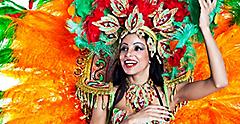
This is not to say Brazilian Carnival costumes are sexually explicit or revealing for the sake of being so. Rather, it's all about the festivity. Samba costumes are a full-body affair — literally. The feathery, fantastical pieces dancers attach to their bikinis and bodysuits give an otherworldly element to the various Samba teams. The graceful, gravity-defying ways they move to the rhythmic, driving music are enchanting.
Both Samba dancers and many festival revelers also wear Carnival masks, which serve two purposes. First, the bright color, feathers and glitter create a surreal look, further adding to the atmosphere of the entire spectacle. Secondly, these masks obscure people's faces and the social classes that many people in highly unequal Brazil feel constrain them during the rest of the year.
As far as the music itself? As has been the case throughout the recent portion of Brazilian Carnival history, Samba music is defined by brass sections and guitars, which imbue a sense of bright celebration and punch percussion into every song. Even if you don't know anything about Samba before landing in Rio (or wherever you celebrate Carnival), it's almost impossible not to dance when you hear it.

The Importance of Preparation Before Carnival

Of course, for the people marching in the aforementioned parade in the Sambadrome (and in the days before the parade, competing for victory), the music isn’t about mere fun and games. It genuinely brings joy to people. Teams prepare most of the preceding year for their competitions, which determine where in the parade they march and, therefore, the amount of adoration and recognition they get from cheering crowds.
With this being said, the very first people in the parade are truly not competitors at all. Rather, they're a flag bearer (who leads the entire parade) and the "King Momo" and "Queen and Princess of Carnival," who are often well-known Brazilian celebrities. This helps boost the viewership of Carnival celebrations on Brazilian TV.
Is Carnival Only In Rio De Janeiro, Brazil?
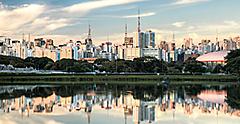
Brazil's most famous Carnival celebration takes place in Rio de Janeiro and other amazing Brazilian travel destinations. In fact, you can experience Carnival in almost every major city in Brazil, from large cities like São Paulo and Salvador de Bahía to the Brazilian capital of Brasilia to coastal cities like Florianopolis. All Carnival celebrations in Brazil take place on roughly the same dates, regardless of the location.
Across Brazil, the size and scope of the Samba competitions that precede the parades vary widely. Not surprisingly, larger cities are going to have more competitors and more extensive celebrations that last for longer. Additionally, if you attend many Carnival celebrations over several years, you may be able to notice regional variations in both music and Brazilian carnival dance.
A familiar cognate to Americans might be the fact that New Orleans is not the only Mardi Gras in North America. Just as secondary U.S. celebrations in cities like St. Louis and Tampa add new elements to the New Orleans experience, each Brazilian Carnival is totally unique, despite having many common characteristics.
There's also the issue of geography to consider. Going to Carnival in highly urbanized São Paulo will be a much more constrained experience than beachside in Rio, which is totally different from the cobbled streets of the historical Pelourinho district in Salvador. Likewise, the Amazonas Carnival in the city of Manaus takes place amid a wild, lush landscape in the Amazon Rainforest.
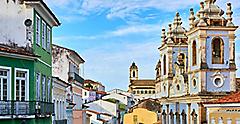
When Is Carnival in Brazil?
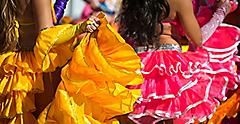
The best time to go to the Brazilian Carnival is slightly different every year. As noted earlier, Carnival's celebration dates depend upon when Lent and Ash Wednesday fall during the year. Carnival can take place fully within February; sometimes it spills into March. Needless to say, if going to Carnival is a top priority for you, you'll want to verify these days before you travel.
If tourism numbers from throughout Brazilian Carnival history are any indication, you'll want to set your trip in stone as soon as possible to avoid extremely high prices on accommodation and other costs of visiting Brazil at this time.
Carnival has taken place most years since its introduction into Brazil, with some exceptions. Most notably, the event was canceled between 1941–1945 due to World War II. More recently, the 2021 event was canceled as a result of the COVID-19 pandemic. Obviously, everyone hopes no more wars or infectious disease outbreaks occur in the future. Any huge global event or disruption could end up canceling a future Carnival, so it’s important to stay abreast of regional, national and global affairs.
If, for whatever reason, an uncontrollable circumstance stymies a Carnival trip you're planning, don't despair. This is particularly the case if you're in Rio, which lives up to its "Cidade Maravilhosa" (marvelous city) nickname 365 days a year. The Carnival Museum within the Sambadrome is open all year, including on the typical Carnival dates during years in which the event can't take place, for whatever reason.
It offers a memorable experience and is definitely worth a visit, no matter the unexpected circumstances or alternative arrangements that may factor into your trip.

Cruise to Rio and Celebrate During Carnival
Even if you don't usually do a lot of "homework" for your travel trips, reading some Brazilian Carnival history is the best way to lay the foundation for a successful future vacation to Brazil. Learning about the first celebrations centuries ago, how they took place and why they started will help you appreciate what today's Carnaval do Brasil has become.
Likewise, if you can't make it to Rio, familiarize yourself with events in cities such as Salvador and São Paulo. Ready to dance and sing in the colorful crowds of Carnival? Explore our cruises to Rio de Janeiro.
Get Royal Deals, Sign Up Today

Getting There
Explore Our Most Affordable Itineraries
Sail to Brazil on a South America cruise for an unforgettable experience.

